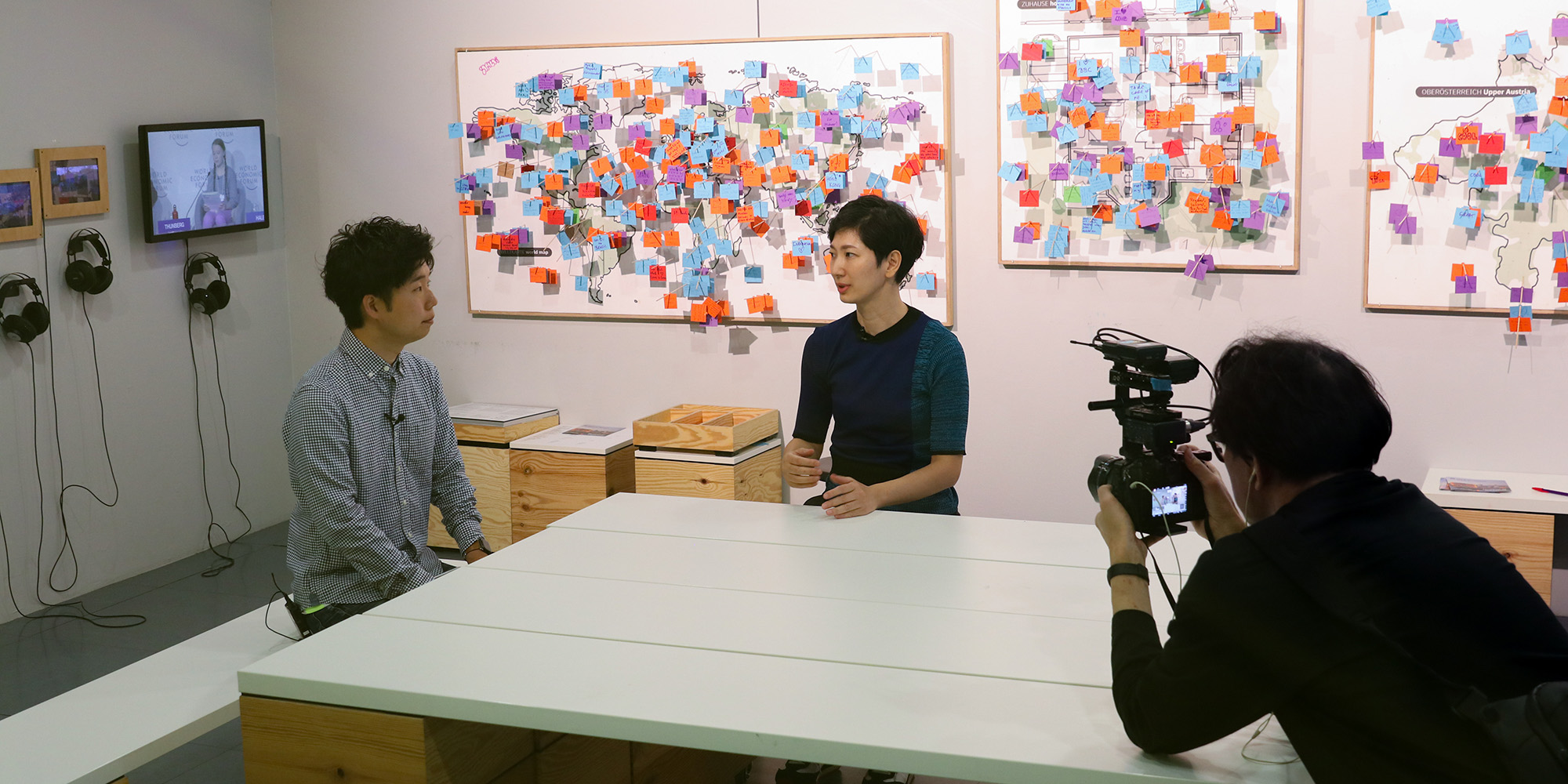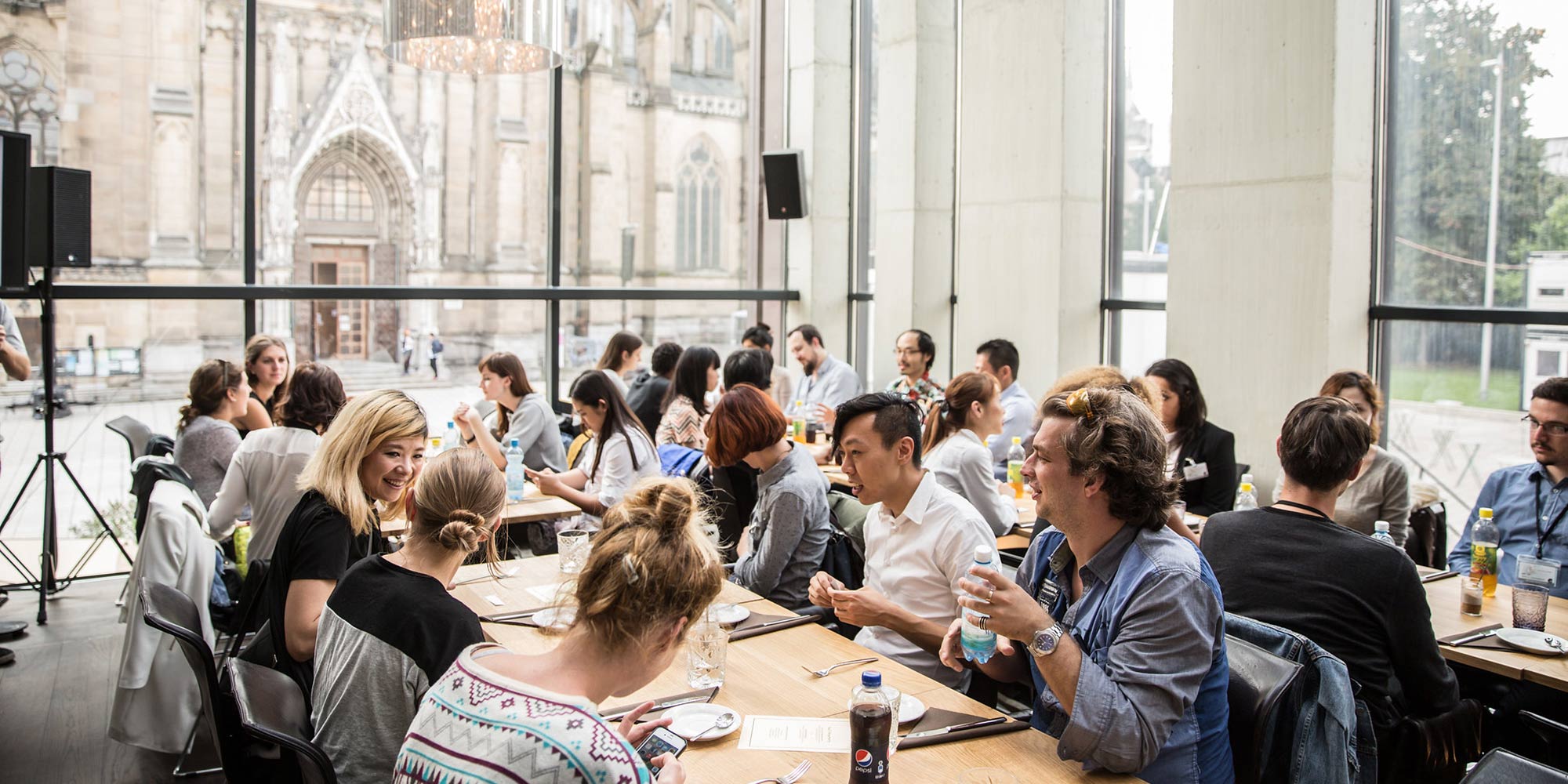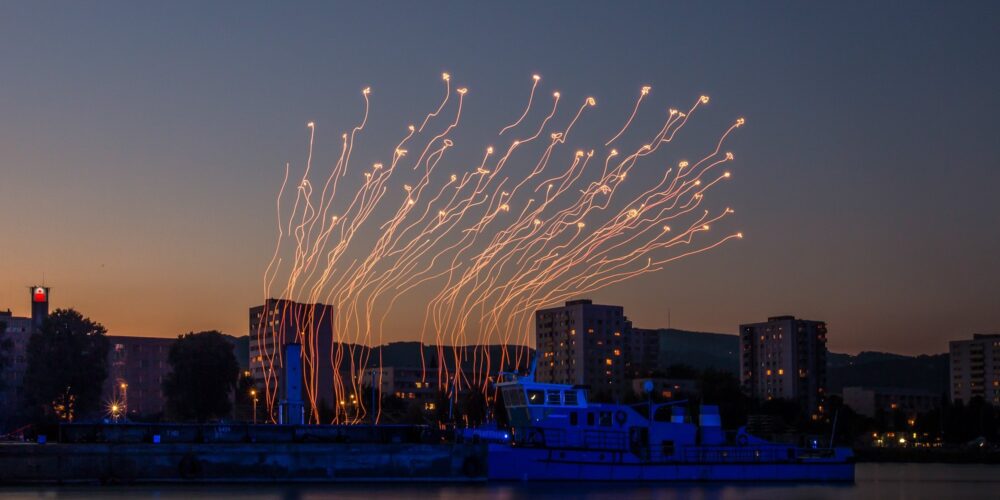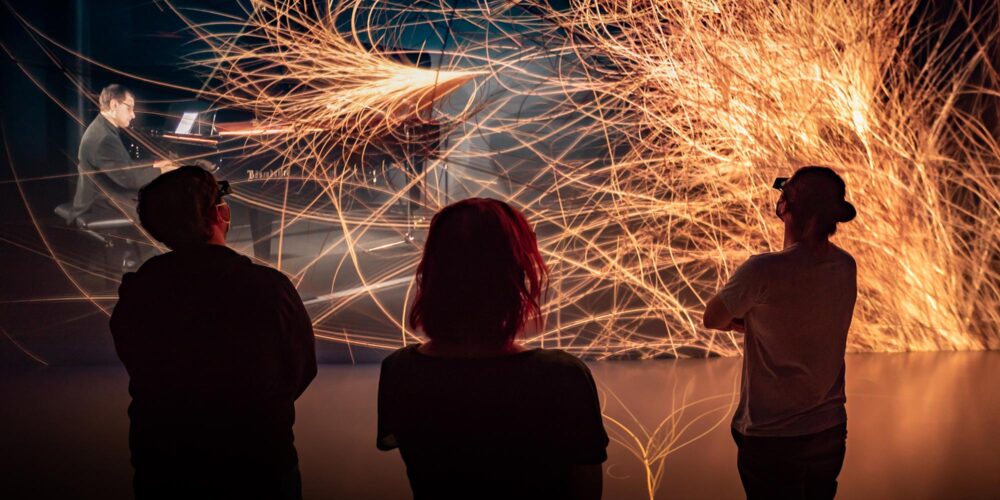What is the role of art in the 21st century?
How can we apply the art for a better future society? Art creates creative questions and design forges creative solutions. Art is a catalyst for shaping a better future society, a way to open up new perspectives, encourage curiosity to look at what is behind the scenes, and to stimulate creative solutions. Art Thinking is a process of applying artistic thinking and an artful view to a broader range of challenges.
How can we become more human? How can microbes save the Earth? How can we co-exist with technology as our second nature? Artists have always understood the power of questions. They transcend from spiritual to material, function to form, natural science to social science, in search of a match of a theme, medium, and expression. They detect social and technological trends that are not yet named and give a form to communicate those micro-trends in a tangible way. We call the process Art Thinking.
Design Thinking is effective for creating and shaping creative solutions for the future. On the other hand, art is effective for observing the many possibilities and issues from a 360-degree perspective. Design is a solution to shape a service or product, it is like a direction. Art is a compass. We tend to forget the fundamental question: What is the design for? What is the direction? And this is where Art Thinking comes in. We are discussing fundamental, essential questions as a starting point for tomorrow. We need to create a compass for where we are standing and to look at which possibilities we have to move forward.
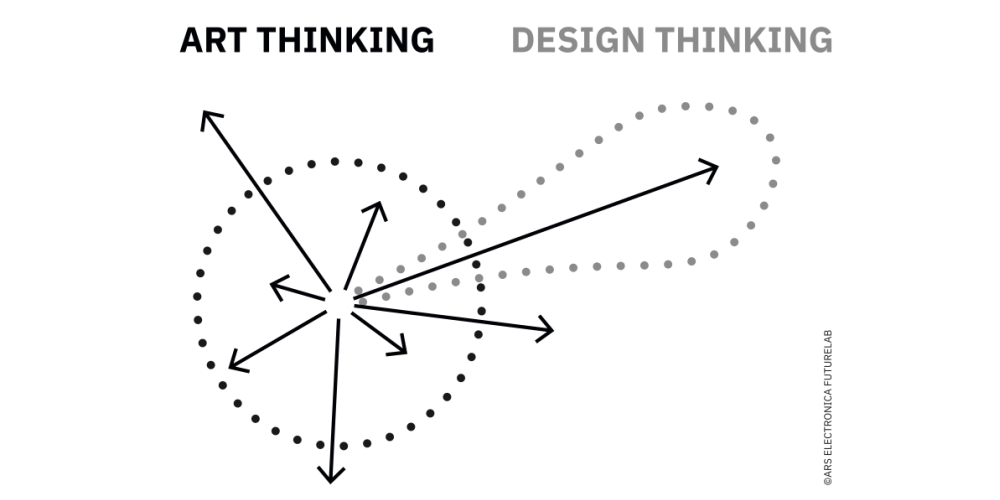

In this research, we are exploring the Art Thinking programs for participants of different disciplines consisting of inspirational tours, talks, workshops, prototyping, and actions. Using Art Thinking as a common driving force, it connects different backgrounds such as creators, industries, governments, and citizens by cultivating a creative mindset of questioning society. Thus, not only as a research domain but also as a new transdisciplinary methodology, Art Thinking has the potential to catalyze innovation, strategy, education, and policy.

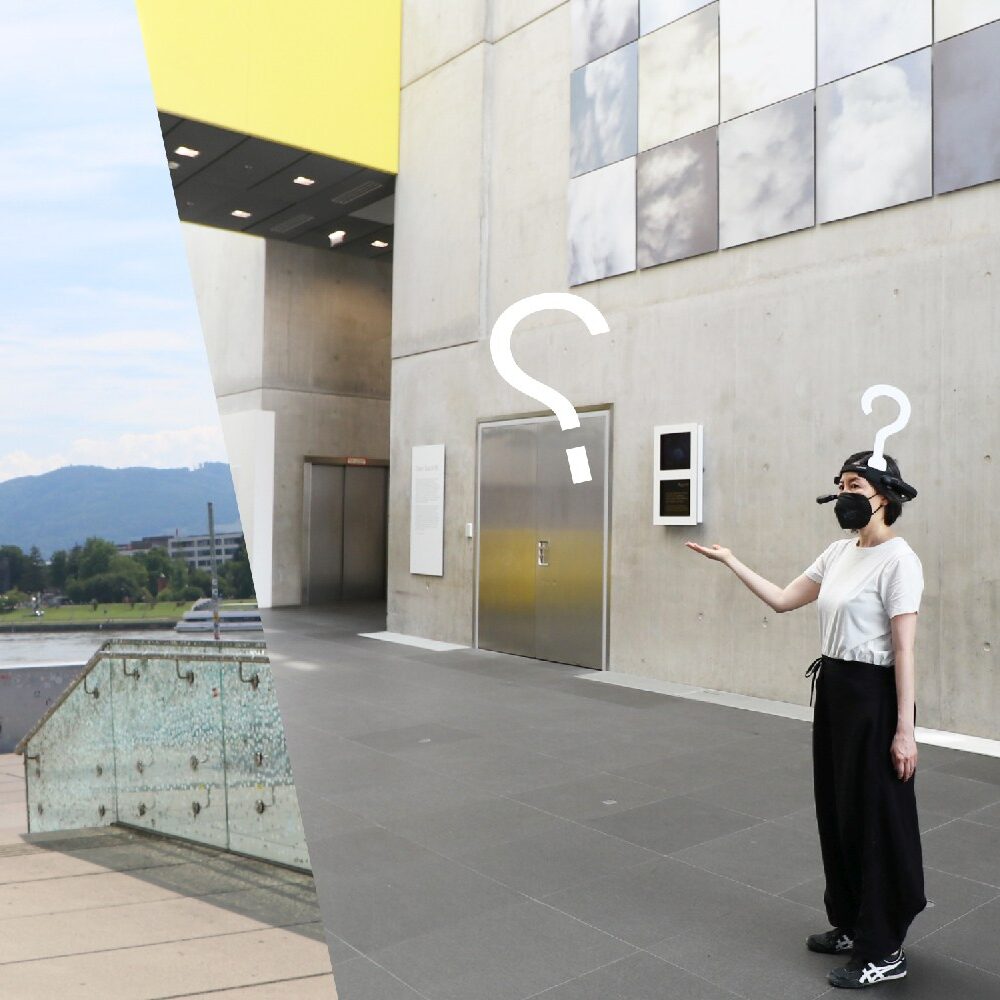
We believe that art and artistic thinking is the best way to understand even the most complex issues and systems created by humankind; be they societal, economic, political, or technological. Art holds the power to scrutinize existing beliefs, cast doubt on common perceptions, and find a way to think outside the box.
The goal of this research initiative is to empower citizens to take on the various societal and technological complexities facing us in today’s fast-paced and fluctuating environment, with the new attitude of Art Thinking.
Process:
Create Your Compass and Envision the Future

At Ars Electronica Futurelab, Art Thinking experts design programs to meet the needs of various partners. The program generally consists of three phases: inspiring, envisioning, and prototyping.
In the Inspiration phase, participants experience how to generate Creative Questions by experiencing a variety of artworks featured at the Ars Electronica Center and Ars Electronica Festival, and by participating in special workshops such as Art Thinking Card Workshop.
In the Envision phase, the questions discovered in the inspiration phase are sublimated into missions for the partners and a concrete plan of action is developed to realize them. The goal of this phase is to conceptualize and sketch the future ideas.
In the Prototype phase, we embody that vision through research and development. The various Futurelab artists, researchers, and partners collaborate to create a tangible future and present it in public to gain feedback and generate social dialogue.
By repeating these three phases, we empower citizens as well as companies and public institutions and thus promote a new culture of innovation.
Key Works
Publications
Art Thinking
Boosting Art Thinking in Business – European Institutions Explore “Sustainability” Featured in Nikkei, October 15, 2022
Art Thinking Program
Hakuhodo (JP) x Ars Electronica (AT), pp.382, Ars Electronica 2022: Festival for Art, Technology, and Society: Welcome to Planet B – A different life is possible. But how?
Art Thinking Program
Hakuhodo (JP) x Ars Electronica (AT), pp.242-pp.243, Ars Electronica 2020: Festival for Art, Technology, and Society: In Kepler’s Gardens – A global journey mapping the ‘new’ world
Art Thinking
Hideaki Ogawa, pp.379, Ars Electronica 2020: Festival for Art, Technology, and Society: In Kepler’s Gardens – A global journey mapping the ‘new’ world
Ars Thinking School
pp.28-pp.29, Ars Electronica 2019: Festival for Art, Technology, and Society: Out of the Box – The Midlife Crisis of the Digital Revolution
Ars Electronica Tokyo Initiative
Rena Tanaka (Hakuhodo Inc.), Hideaki Ogawa (Ars Electronica Futurelab)
pp.354-pp.355, Ars Electronica 2017: Festival for Art, Technology, and Society: AI – das andere Ich
Art Thinking Program
Hideaki Ogawa
pp. 176-pp.177, Ars Electronica 2016: Festival for Art, Technology, and Society: RADICAL ATOMS and the alchemists of our time
New Ways of Thinking: The Future Catalysts
Hideaki Ogawa, Markus Scholl
pp. 174-pp.175, Ars Electronica 2016: Festival for Art, Technology, and Society: RADICAL ATOMS and the alchemists of our time
Developing Prototypes for the Future
Kristefan Minski, Hideaki Ogawa and Kyoko Someya
pp. 173, Ars Electronica 2016: Festival for Art, Technology, and Society: RADICAL ATOMS and the alchemists of our time
Post City Kit Initiative by Future Catalysts Hakuhodo x Ars Electronica
Hideaki Ogawa, Ars Electronica + Kazuhiko Washio, Hakuhodo
pp.96 – pp.97, Ars Electronica 2015: Festival for Art, Technology, and Society: Post City Habitats
Future Catalysm: Artists as Catalysts for a Creative Society
Hideaki Ogawa
pp.27-pp.28, Ars Electronica 2014: Festival for Art, Technology, and Society: C…What It Takes to
The Future Innovators Summit
Ars Electronica
pp.25-pp.26, Ars Electronica 2014: Festival for Art, Technology, and Society: C…What It Takes to
Shadowgram: a case study for social fabrication through interactive fabrication in public spaces
Hideaki Ogawa, Martina Mara, Christopher Lindinger, Matthew Gardiner, Roland Haring, David Stolarsky, Emiko Ogawa, Horst Hörtner
February 2012 TEI ’12: Proceedings of the Sixth International Conference on Tangible, Embedded and Embodied Interaction, Publisher: ACM
SWITCH: case study of an edutainment kit for experience design in everyday life
Matthew Gardiner, Hideaki Ogawa, Christopher Lindinger, Roland Haring, Emiko Ogawa, My Trinh Gardiner, Martina Mara, Horst Hörtner
February 2012 TEI ’12: Proceedings of the Sixth International Conference on Tangible, Embedded and Embodied Interaction. Publisher: ACM
Social brainstorming via interactive fabrication
Matthew Gardiner, Christopher Lindinger, Roland Haring, Horst Hörtner, Hideaki Ogawa, Emiko Ogawa
November 2011 ACE ’11: Proceedings of the 8th International Conference on Advances in Computer Entertainment Technology. Publisher: ACM
The city at hand: media installations as urban information systems.
Roland Haring, Hideaki Ogawa, Christopher Lindinger, Horst Hörtner, Shervin Afshar, David Stolarsky
October 2010 NordiCHI ’10: Proceedings of the 6th Nordic Conference on Human-Computer Interaction: Extending Boundaries. Publisher: ACM
Introducing the FabLab as interactive exhibition space
Irene Posch, Hideaki Ogawa, Christopher Lindinger, Roland Haring, Horst Hörtner
June 2010 IDC ’10: Proceedings of the 9th International Conference on Interaction Design and Children. Publisher: ACM


